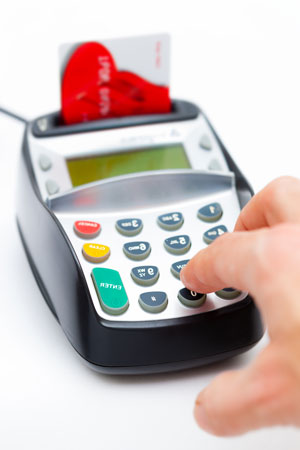

Your business will need to meet new liability and compliance standards as well as update hardware, software or both. This will be the case until there has been a complete transition to chip-and-PIN terminals. Currently, terminals are more suited to prompting a signature to authenticate a payment. The reason the PIN is required is not so much about the security of the chip, then, but more so it is used as a means to verify a payment in real time. Because the transition from mag stripe to chip reader is still in progress, many terminals are not set up with chip-and-PIN technology, so chances are you won’t need both just yet. In other words, the payment went through right away and the communication between the bank, the business, and the card happened immediately.
CHIP AND PIN TERMINALS VERIFICATION
When a chip card reader does not prompt you for a PIN, it means the transaction verification happened in real time. Not all payments will prompt you to input your PIN, but depending on the technology in the payment terminal and whether or not your card has a verification method tied to it, you might need this extra step. If chip cards are supposed to be more secure, you might question why a PIN or signature is still required.

Sometimes, a POS terminal will still ask you to provide a PIN or signature to authenticate a purchase. Because chip card readers are still gaining popularity, credit cards now have a magnetic stripe and a chip reader in case a business has not made the switch to chip reading technology.

Encrypted transactions make fraud much more difficult because payment details and cardholder information is hidden. Transaction codes change every time a payment is completed. Whether mobile payments or countertop payments suit your business, we have the perfect solution for you. Our credit card terminals all come with the most secure chip card readers for your business. ID TECH wants to make that number even better. Among merchants who made the switch from magnetic stripe reader to chip card readers from 2015 to 2016, Mastercard noted a 54 percent decrease in credit card fraud costs. This allows the data in the chip to change from payment to payment so it can’t be copied like the permanent data in a magnetic stripe. The chip card reader gathers the data internally, rather than through a quick swipe. Luckily, the chip card uses encrypted data to keep your bank information safe when paying with credit cards.Įach time you make a payment, the POS terminal will prompt you to insert your card. With so many different forms of payments nowadays, it’s hard to keep track of all your cards and digital wallets and payment apps, and fraudsters abound. For nearly five years now, credit card companies have been making the switch from magnetic stripe to chip cards. However, the use of strips on cards is becoming less common. You might even still use it from time to time. Chip Card Readers in 2019: Everything You Need to Knowīy now, you’re used to the magnetic stripe on the back of your credit cards.


 0 kommentar(er)
0 kommentar(er)
